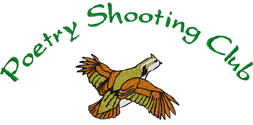Beretta Blog
Should I Shoot One-Eyed or Two? – Shooting Tips
Posted by Sara Ahrens
on Jul 31, 2013 9:00:00 AM
When responding to a stimulus, 80% of sensory input derives from the visual sense. This process requires the use of both sides of the brain in order function. Both the left and right hemispheres of the brain share the information acquired through visual input.
When shooting one-eyed, shooters don’t get the full picture. As a matter of fact, without the use of both eyes, many visual functions are limited.
Many shooters initially learn to shoot with one eye and it is a habit that is hard to break. The benefits of shooting two-eyed, however, make learning this skill worthwhile.
Drawbacks of Shooting One-Eyed
There are many disadvantages to shooting with one eye. For those who carry concealed, they do so for self-defense or defense of others. Closing one eye negatively impacts the visual system. Visual acuity decreases, as does depth perception, balance, and spatial orientation.
These are important tasks that must not be sacrificed during serious situations. Shooting under stress complicates things further. Shooting with one eye will decrease the speed and efficiency of information processing. This means that it takes longer for the brain to process the information needed to react. In critical situations, our brain cycles through a process known as the OODA loop (Observe, Orient, Decide, Act). This is important for threat assessment and reaction time. In addition, after addressing a target, the shooter needs to determine the effectiveness of their actions, and identify the existence of other threats.
Benefits of Shooting Two-Eyed
Shooting with both eyes aids survival. Research has found that both eyes will remain open during a shooting. This is instinctive and cannot be controlled. Therefore, it would be advantageous to learn to shoot with both eyes before being faced with a deadly force situation.
Even though it’s instinctive, practicing the skill increases success rates. The eyes are complicated organs. They are offset, each interpreting visual stimuli from a slightly different perspective. Each eye takes in visual stimulus, and the information from each eye is transmitted from separate sides of the brain to the other. Field of vision occurs when both eyes converge. This convergence allows us to see in three dimensions, determine distances and speed, allow for spatial orientation, and assists with balance.
Our visual sensitivity and hand-eye coordination increases when binocular vision is employed. Visual sensitivity is the ability to respond to physiological changes. This sensitivity provides the shooter with the ability to respond to changes in the environment. It is more than twice as great using both eyes (duh, right?). The shooter will experience an increase in efficiency in hand-eye coordination, also known as visual-motor task.
When addressing a target less than three feet it is virtually impossible to determine distance. So determining distances up to 25 during a shooting situation can be extremely difficult, if not impossible. Distances beyond three feet can be judged only by visual cues, which require moving the head back and forth. Individuals with monocular vision are often unable to drive because of being unable to determine distances, they are seven times as likely to be involved in accidents than other motorists.
The use of two eyes in low light situations can increase one’s success when addressing a target. Many shooting situations occur in low light situations. The eye contains cones and rods. The rods are dominant in bright lighting conditions, whereas rods are dominant in low light conditions. The rods are what allow the eye to see detail. The more lighting decreases, the more prominent the cones are in the eyes. This diminishes details that may be necessary for determining whether or not an object presents a threat. Using two eyes while shooting or even assessing a threat, allows for more light to enter the eye. This additional lighting increases our ability to see more details, thus decreasing the OODA loop.
One Eye Or Two? Survey Says…TWO!
Shooting with both eyes open is a skill worthy of learning
Clearly the research indicates that the benefits of learning to shoot with two eyes have a significant positive impact during shooting situations. Shooting with two eyes will improve hand-eye coordination; allow shooters to determine speed and distance of a threat. It allows for spatial orientation and allows us to maintain balance. In addition, it increases our field of vision and shortens our OODA loop in low light situations. Since it has been proven that shooters will leave their eyes open in a shooting situation it is best to practice the skill before it is needed. And although this was probably not the intent of an old adage – it certainly applies; two eyes are better than one.
